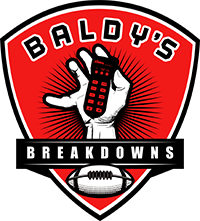
In the high-stakes world of the NFL, the importance of player development cannot be overstated. It’s the beating heart of every successful franchise, a transformative force that shapes raw talent into polished greatness.
Beyond the breathtaking touchdowns and game-saving tackles, lies an intricate web of training, mentorship, and relentless determination that molds these athletes into champions. This journey of growth not only boosts performance on the field but also instills values that propel players to excel in all aspects of life.
Join me as we delve into the riveting impact of player development and its role in crafting the legends of tomorrow.
The Power of Player Development in Shaping NFL Success
In the vibrant and fiercely competitive world of the NFL, player development stands as the cornerstone of greatness. As we witness breathtaking touchdowns and game-saving tackles every Sunday, it’s easy to overlook the painstaking voyage players undergo behind the scenes.
The real story often lies in the sweat-drenched training grounds, where dreams are forged, and where the seemingly impossible becomes reality.
The Building Blocks of Development
At its core, player development is a multi-faceted endeavor that goes beyond merely improving physical skills. It focuses on:
- Physical Conditioning: This realm encompasses strength, agility, and endurance training. Players devote countless hours to workouts tailored to maximize their on-field performance. NFL franchises employ state-of-the-art technologies and employ top-notch trainers to ensure athletes reach and sustain peak condition.
- Technical Skills: Mastery over sport-specific skills, whether it’s a quarterback’s precision or a wide receiver’s route-running, is essential. The subtleties learned during countless drills and practice games build muscle memory that fans witness as spectacular plays.
- Mental Acumen: Football isn’t just a physical game; it’s a cerebral one too. Developing a strong football IQ, understanding opponent strategies, and honing reaction time are essential. Film study, simulation exercises, and strategic meetings play an invaluable role in this aspect.
- Leadership and Character Development: Alongside physicality and strategy, creating a winning mindset is paramount. Leadership programs, mentorship from seasoned players, and community engagements help in honing the mental toughness and character required to succeed.
The Role of Coaches and Mentors
Coaches are the architects of these complex and multi-layered developmental programs. From head coaches to position-specific specialists, each plays a pivotal role in nurturing talent. The teachings extend beyond the field; they teach perseverance through adversity and instill a level of discipline that stays with players long after their careers end.
Having a mentor can change the course of a player’s career. Veterans impart wisdom garnered from years of experience, guiding newcomers through pitfalls and pressures that accompany the life of a professional football player. This relationship cultivates an environment of continual growth and unyielding support.
Technological Advancements in Development
Modern technology has revolutionized player development:
- Wearable Tech and Analytics: Devices that monitor vitals, exertion, and injuries give real-time data, enabling precision and personalization in training regimes.
- Virtual Reality (VR): VR simulations have become a game-changer, allowing players to relive practice situations and improve decision-making skills in a controlled environment.
- Film Analysis: Extensive footage reviews using advanced software tools assist players in dissecting their performance, refining tactics, and addressing weaknesses.
Player Development Beyond the Field
Elite player development trains not only athletes but also well-rounded individuals. Such initiatives often include:
- Educational Programs: Ensuring players grow off the field, educational outreach programs help them in acquiring degrees or certifications, preparing them for life post-retirement.
- Community Involvement: Players are encouraged to engage in charitable activities and community services, reinforcing their ties to the community and helping them evolve as role models.
Success Stories
Examples of successful player development are scattered across all 32 NFL teams:
- Tom Brady: The quintessential example of talent fully realized through relentless development. From a 6th-round draft pick to becoming arguably the greatest quarterback of all time, his career reflects several hours spent honing his craft, maintaining physical condition, and an unparalleled mental focus.
- Patrick Mahomes: The Kansas City Chiefs superstar’s rise to prominence mirrored meticulous development. Under the mentorship of Andy Reid, his physical skills have been complemented with continuous mental and technical refinement, resulting in a dazzling career trajectory.
Impact on Team Dynamics and Culture
Effective player development also fosters a cohesive team culture:
- Shared Vision: Teams invested in robust development programs often share a common goal and vision. The cohesion achieved through shared growth experiences translates to an unwavering team spirit on game days.
- Low Turnover: Improving on internal talent reduces dependency on constant trades or fresh drafts, fostering long-term stability.
- Injury Management: Proper physical training reduces injury rates, ensuring that key players remain consistent contributors throughout the season.
Conclusion
In the pulsating arena of the NFL, the role of player development cannot be understated. It’s the lifeblood through which teams transform potential into unparalleled talent, sculpting athletes who not only excel in their careers but also leave an indelible mark on the game.
As we continue to watch our favorite players on the field, let’s appreciate the unseen grind, commitment, and unwavering efforts cultivated through astute player development.
To stay updated with more insights, check out our social media channels:
